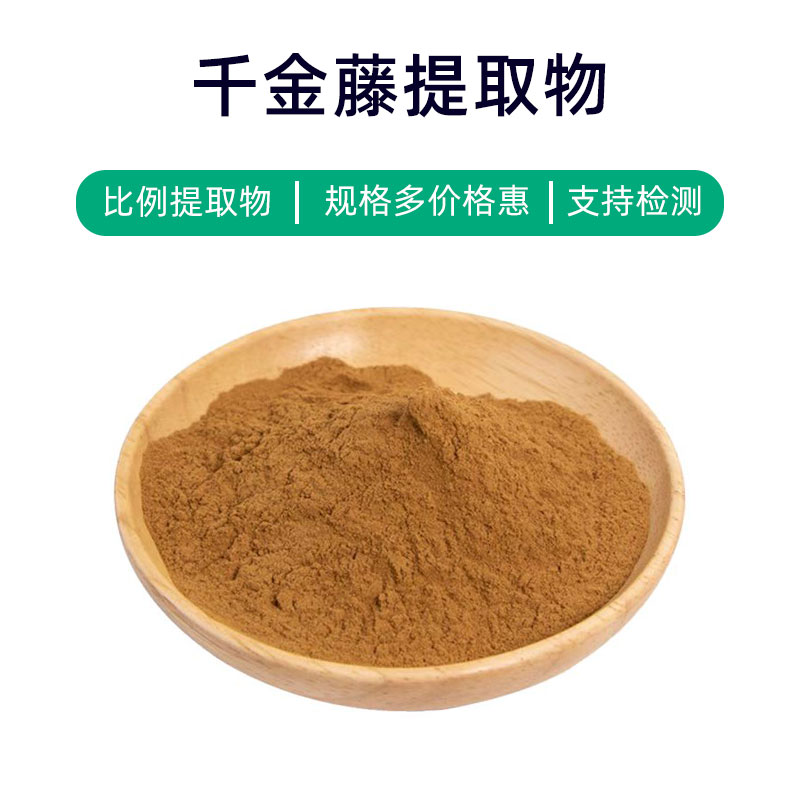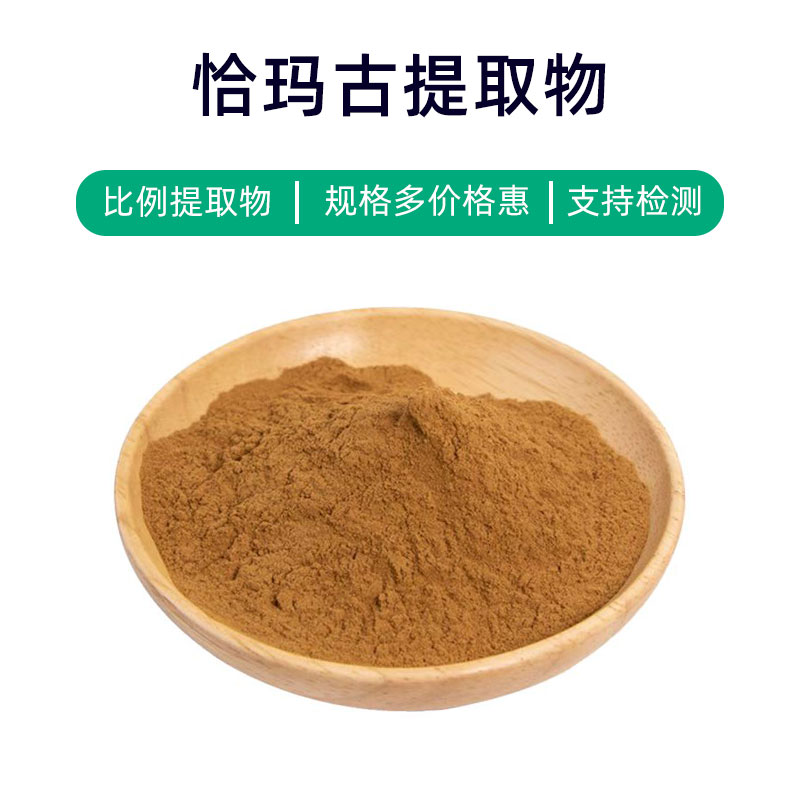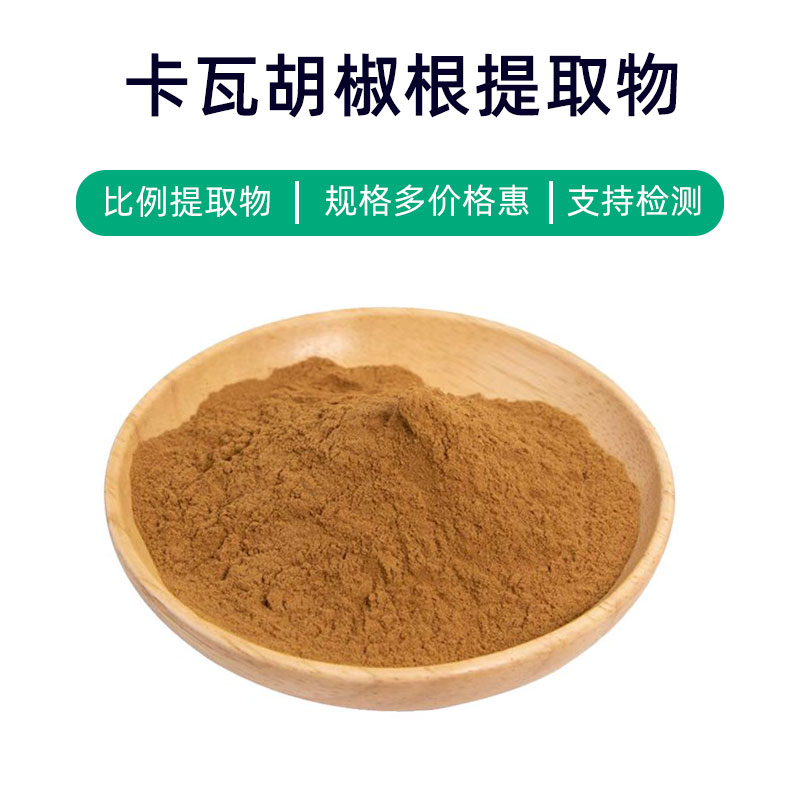Ginkgo Biloba Extract Product Introduction
Ginkgo Biloba Extract is a natural plant extract derived from ginkgo leaves. Its main components include ginkgolides, phenols, flavonoids, and other active ingredients. Ginkgo Biloba Extract is widely used in pharmaceuticals, health products, and cosmetics.
Its main benefits include:
- Improving Memory and Cognitive Function: The ingredients in Ginkgo Biloba Extract positively affect brain blood circulation, helping to enhance memory and cognitive abilities.
- Protecting Cardiovascular Health: Ginkgo Biloba Extract has antithrombotic, vasodilatory, lipid-lowering, and antioxidant effects, aiding in the prevention of cardiovascular diseases.
- Antioxidant Effect: The flavonoid components in Ginkgo Biloba Extract have strong antioxidant capabilities, helping to eliminate free radicals in the body and delay the aging process.
In the pharmaceutical field, Ginkgo Biloba Extract is commonly used in the preparation of cardiovascular medications and brain function health supplements. In the health product sector, it is used in brain enhancement and cardiovascular health products. In the cosmetics industry, Ginkgo Biloba Extract is used in anti-aging and antioxidant skincare products.
Overall, Ginkgo Biloba Extract, as a natural plant extract, has multiple benefits and broad application prospects in various fields.
Ginkgo Biloba Extract Production Process
The production process of Ginkgo Biloba Extract mainly includes the following steps:
- Raw Material Preparation: Fresh ginkgo leaves are collected, usually during the growth period, cleaned to remove impurities, and then pretreated by drying or roasting to ensure the quality and stability of the extract.
- Extraction Process: Common extraction methods include water extraction and ethanol extraction. In water extraction, dried ginkgo leaves are soaked, heated, and stirred to dissolve the active ingredients into the water. Ethanol extraction uses ethanol to extract the effective components from the ginkgo leaves.
- Filtration and Concentration: The extract solution is filtered through filter paper or specific filtration equipment to remove solid impurities. Evaporation or vacuum concentration methods are then used to remove the solvent from the extract solution, obtaining a concentrated extract.
- Drying and Grinding: The concentrated extract is dried, typically using spray drying or vacuum drying, converting the liquid extract into powder. The powder is then ground and sieved to control particle size and uniformity.
- Quality Control: The final Ginkgo Biloba Extract product undergoes quality testing, including active ingredient content, heavy metals, and microbiological indices, ensuring the product meets relevant quality standards and safety requirements.
- Packaging and Storage: Qualified Ginkgo Biloba Extract products are packaged, usually in sealed packaging to avoid direct sunlight and humid environments. They are stored in a cool, dry place to avoid high temperatures and moisture, ensuring product stability and quality.
Ginkgo Biloba Extract Benefits and Side Effects
Ginkgo Biloba Extract, derived from ginkgo leaves, has various benefits and functions. Its main benefits include:
- Improving Brain Function: Ginkgo Biloba Extract contains rich flavonoids that enhance brain blood circulation and promote nerve cell growth, helping to improve memory, attention, and cognitive abilities.
- Antioxidant Effects: The flavonoids and phenols in Ginkgo Biloba Extract have strong antioxidant effects, clearing free radicals, delaying cell aging, and protecting cells from oxidative damage.
- Protecting Cardiovascular Health: Ginkgo Biloba Extract dilates blood vessels, lowers blood lipids, and inhibits platelet aggregation, improving cardiovascular function and preventing atherosclerosis and cardiovascular diseases.
- Anti-inflammatory and Anti-allergic Effects: Active ingredients in Ginkgo Biloba Extract have anti-inflammatory and anti-allergic effects, alleviating inflammation and allergic symptoms, and aiding in treating allergic rhinitis and skin itching.
- Promoting Blood Circulation: Ginkgo Biloba Extract improves microcirculation, increases blood flow, reduces vascular resistance, and alleviates symptoms
Ginkgo extract is generally classified as a natural plant extract and is considered relatively safe for most people. However, attention should still be paid to the following side effects and precautions during use:
- Individual Differences: Ginkgo extract may cause different reactions in individuals. Some people may experience mild adverse effects such as headaches, dizziness, or gastrointestinal discomfort.
- Drug Interactions: Ginkgo extract may interact with certain medications, affecting their efficacy or increasing side effects. It is advisable to consult a doctor or pharmacist before use.
- Caution for Pregnant and Breastfeeding Women: Pregnant and breastfeeding women should use ginkgo extract under medical supervision to avoid potential adverse effects on the fetus or infant.
Overall, ginkgo extract, as a natural plant extract, offers various benefits and is generally safe. However, its use should follow medical guidance, considering individual differences and potential drug interactions to ensure safe and effective application.
Applications, Usage, and Dosage of Ginkgo Extract
Ginkgo extract is widely used in pharmaceuticals, food, and cosmetics, with different usage and dosage recommendations depending on the application. Below is an overview of its applications and corresponding usage instructions:
- Pharmaceutical Applications
- Purpose: Ginkgo extract is commonly used in the pharmaceutical industry as a medicinal ingredient or part of traditional Chinese medicine formulations. It helps improve cerebral circulation, enhance memory, and prevent thrombosis.
- Usage & Dosage: Adults typically take ginkgo extract tablets or capsules orally at a dose of 80–120 mg per intake, 2–3 times daily, preferably after meals. The dosage for children should be adjusted based on age and weight.
- Food Applications
- Purpose: Ginkgo extract is often added to various health foods, functional foods, and dietary supplements to enhance memory, boost immunity, and provide antioxidant benefits.
- Usage & Dosage: The recommended daily intake for adults depends on the specific product. Users should follow the dosage instructions provided on the product label and avoid excessive consumption.
- Cosmetic Applications
- Purpose: Ginkgo extract is frequently incorporated into cosmetics for its antioxidant properties, anti-aging effects, and ability to improve skin smoothness.
- Usage & Dosage: The amount of ginkgo extract used in cosmetics varies based on the product formulation. It is recommended to follow the instructions provided on the product packaging for proper application.
Precautions for Use
- When used in pharmaceuticals, ginkgo extract should be taken according to a doctor's or pharmacist's advice, without self-adjusting the dosage or switching products.
- For food and cosmetic applications, products should be purchased from reputable sources, and users should follow the specified usage and dosage instructions to prevent adverse reactions due to overuse.
- Special groups, such as pregnant women, breastfeeding women, and children, should consult a healthcare professional before use to ensure safety.
Ginkgo Plant: Origin, Distribution, and Growth Environment
Origin Plant
Ginkgo (Ginkgo biloba) belongs to the Ginkgoaceae family and is a deciduous tree species. Its leaves are fan-shaped with distinct veins, turning golden yellow in autumn, making it visually appealing. Ginkgo is one of the oldest plant species on Earth, existing for hundreds of millions of years and earning the title of a "living fossil."
Distribution
Ginkgo is native to China and is naturally found in areas north of the Yangtze River, particularly in central and southern China. It is also distributed in Japan, Korea, Vietnam, and other East Asian regions. Today, ginkgo has been introduced and cultivated worldwide, including in Europe, North America, and Australia.
Growth Environment
Ginkgo trees adapt well to different soil types and climatic conditions. They thrive in sunny environments and grow best in well-drained soil, although they are not highly demanding in terms of soil quality. Ginkgo trees are cold-resistant but can also tolerate high temperatures, making them highly adaptable. While they prefer humid conditions, they also exhibit good drought resistance.
In China, ginkgo trees are commonly found in mountains, hills, valleys, and plains, with distributions ranging from low to medium altitudes. They are widely used in parks, courtyards, and roadside plantings, making them a popular urban landscaping tree.
Overall, ginkgo is an ancient and beautiful tree with significant ecological and ornamental value. Its wide distribution and strong adaptability make it an excellent choice for landscape greening.
Processing and Storage of Ginkgo Extract
The processing of ginkgo extract typically involves the following steps:
- Extraction: Active compounds are extracted from ginkgo leaves using water or ethanol extraction methods.
- Concentration & Filtration: The extracted solution undergoes concentration and filtration to increase the concentration of active ingredients.
- Drying & Pulverization: The concentrated extract is dried and ground into a fine powder to obtain the final product.
For storage, ginkgo extract should be kept in a cool, dry, and well-ventilated environment, avoiding direct sunlight and excessive humidity. It is recommended to store the extract in sealed containers at room temperature to prevent moisture absorption and contamination, ensuring its stability and quality.
Monica Sun is a seasoned expert in the plant extraction industry with over a decade of experience in research and production. She specializes in the extraction and purification of plant active ingredients, focusing on driving innovation in natural product applications. Monica has participated in the development of multiple functional plant extracts, delivering high-value natural raw material solutions for the health food, pharmaceutical, and dietary supplement sectors.


















